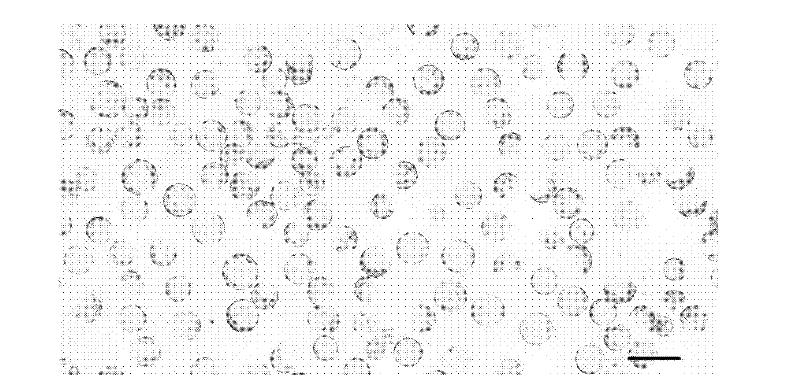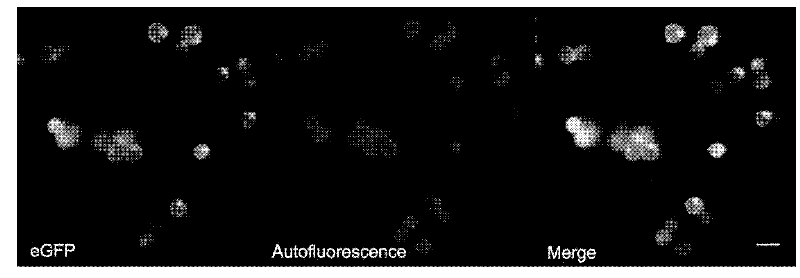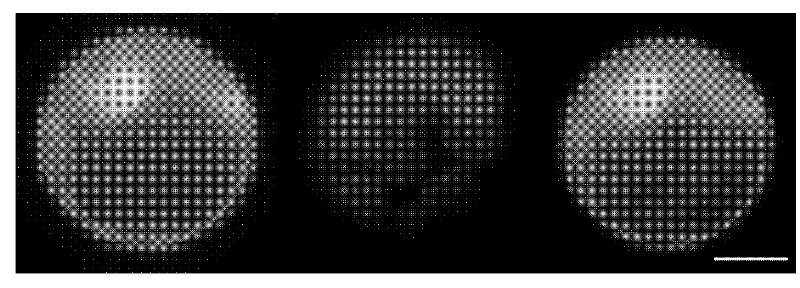Method for performing transient expression by introducing foreign gene into poplar bioplast
A protoplast, exogenous gene technology, applied in the field of genetic engineering, to achieve the effect of easy operation and realization
- Summary
- Abstract
- Description
- Claims
- Application Information
AI Technical Summary
Problems solved by technology
Method used
Image
Examples
Embodiment 1
[0030] Embodiment 1: The influence of different enzyme liquid combinations on poplar protoplast separation
[0031] In the preparation of the enzyme solution, according to the enzymes commonly used in the separation of plant protoplasts, select cellulase R-10 (Cellulase R10, 5000U / g), RS (Cellulase RS, 16000U / g), Sigma cellulase (840U / ml) , pectinase Y23 (Pectolyase Y23, 1000U / g), Sigma pectinase (Pectinase (sigma), 3800U / ml), pectinase R-10 (Macerozyse R10, 3000U / g), respectively dissolved in different combinations In the enzyme solution, the separation experiment of poplar mesophyll protoplasts was carried out, and the combination and concentration of enzymes are shown in Table 1.
[0032] Table 1 Enzyme solution composition and concentration
[0033]
[0034]The experimental results showed that the yield and quality of mesophyll protoplasts isolated under various enzyme solution composition conditions were different. In the same type of enzyme solution combination, as ...
Embodiment 2
[0039] Embodiment 2: Effect of PEG concentration on conversion efficiency
[0040] PEG acts as a medium for transformation to aggregate protoplasts and plasmids. In this experiment, PEG4000 was used to transform poplar mesophyll protoplasts. The initial concentration gradient of the configured PEG solution is 20% g / ml, 30% g / ml and 40% g / ml, and about 6×10 4 1 protoplast, 10 μg of plasmid DNA and different concentrations of PEG4000, the PEG4000 added is 1 / 2 of the total transformation system volume, that is, the concentration of PEG during transformation is 10%, 15%, and 20%, respectively. Incubate at 25°C for 15 minutes. Before transformation, the PEG solution was sterilized by filtration through a 0.45 μm mixed cellulose microporous membrane. Experiments were repeated three times.
[0041] Since the volume of PEG added during conversion is 1 / 2 of the total volume of conversion, the final concentrations of PEG during conversion are 10%, 15% and 20%, respectively. After b...
Embodiment 3
[0044] Plasmid DNA is used as a vector to bring the target gene into protoplast cells and express it in a short time. Its content has a great influence on the conversion efficiency. According to the above-mentioned transformation method, plasmids of different masses were added to the transformation system, and their effects on the transformation efficiency were detected. Set the plasmid gradient as: 5 μg, 10 μg and 15 μg. Plasmids of different qualities were added to the transformation system, about 6×10 4 protoplasts and optimized PEG4000. Wherein, PEG4000 added is 1 / 2 of the volume of the total transformation system, and incubated at 25° C. for 15 minutes. Experiments were repeated three times.
[0045] according to Figure 5 As shown, when the number of protoplast cells is constant, the transformation efficiency will increase with the increase of the plasmid concentration within a certain range. The experiment stabilized the number of protoplasts at 6×10 4 , when add...
PUM
| Property | Measurement | Unit |
|---|---|---|
| Width | aaaaa | aaaaa |
Abstract
Description
Claims
Application Information
 Login to View More
Login to View More - R&D
- Intellectual Property
- Life Sciences
- Materials
- Tech Scout
- Unparalleled Data Quality
- Higher Quality Content
- 60% Fewer Hallucinations
Browse by: Latest US Patents, China's latest patents, Technical Efficacy Thesaurus, Application Domain, Technology Topic, Popular Technical Reports.
© 2025 PatSnap. All rights reserved.Legal|Privacy policy|Modern Slavery Act Transparency Statement|Sitemap|About US| Contact US: help@patsnap.com



